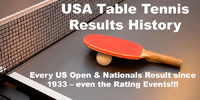It's a two-step process. Focus on both steps, and it'll happen.
First, think about the game a lot. There are really three realms here – technique, tactics, and sports psychology. The more you think about them the better your understanding will be. Think about every aspect. If you have questions, ask someone experienced and knowledgeable. (Or buy a good table tennis book that will make you think about the sport!) A true student of the game learns all he can, and this makes him both a better player and a better coach. Note that this thinking should take place primarily away from the table. Once you are at the table, you have to let your training take over, where you limit your thinking to between points, focusing on simple tactics. Too much thinking there just freezes you up, whether it's in a match or training.
Second, talk to smart table tennis people. You will be amazed at how much you can learn by listening. There are weak players who are smart players - and you can learn from them. There are also strong players who really aren't smart table tennis people, but they know their game, and you can learn from that. (Long ago I learned that you can divide top players into those two categories – table tennis experts, and experts only on their game.) You can also learn a lot by talking to average players who are not necessarily smart table tennis players. Unless you literally think you know more about every aspect of table tennis than they do, you can learn something from them. Plus, you learn how other players think, which helps in developing your own tactics. (For example, I’ve sometimes fallen into the trap of thinking opponents think too much, where I’ll think, “This is what I should do, but he’s expecting that, so I better do something else.” I’ve learned that the large majority of the time, opponents aren’t expecting the obvious, or at least aren’t ready for it.)





